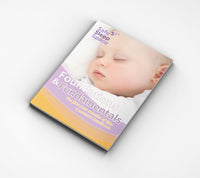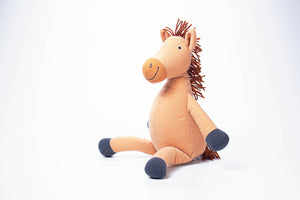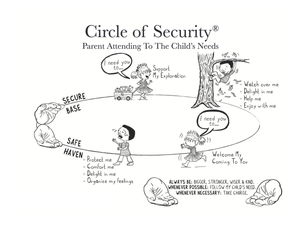What is a Dream Feed and when should I introduce one?

A dream feed is a rather lovely term for feeding a baby when they’re asleep. Lots of parents say that offering their baby a dream feed works really well, others feel it’s a waste of time. Some babies suck very well when they’re sleepy and others don’t.
Like all parenting decisions, whether you offer a dream feed is really up to you.
Why Would I Offer my Baby a Dream Feed?
Making the decision to offer dream feeds is usually based on a problem. The baby has a pattern of waking in the wee small hours, is hungry and needs a feed. This of course means the parent’s sleep is disturbed. Offering the baby a feed earlier in the night – around 10 pm can lead to the baby sleeping for longer.
What Time Would I Offer a Dream Feed?
This depends on a few factors:
- The way you’re feeding e.g. breast or bottle.
- What time your baby last fed.
- The number of times your baby usually wakes through the night for a feed.
- The time your baby usually wakes for a feed.
- How long they go between feeds at night.
Benefits of Offering a Dream Feed
- Can be a good way to ‘fill up’ a baby so they don’t wake for a feed when they normally would in the early hours of the morning.
- Allows parents to have a longer, unbroken sleep overnight without their baby waking for a feed.
- Can bring routine and predictability if parents want to try timing feeds rather than demand feed. N. B. This is not an ideal way to feed – usually, responsive feeding is better.
- Can be one way to make up for feeds the baby hasn’t had through the day.
- A way for a breastfeeding mother to build her supply and get more stimulation.
- Way to offer expressed breast milk (EBM) or formula for a baby whose weight may be low and they need more kilojoules.
- A way for breastfeeding mothers particularly, to reconnect with their baby if they’ve been apart, e.g. mother at paid work or out.
Risks of Offering a Dream Feed
- The baby won’t feed because they aren’t hungry enough.
- The baby is so sleepy that they don’t coordinate their suck and swallow responses.
- Wasted formula or EBM if the baby is bottle feeding – neither can be reheated or kept.
- The baby wakes up.
- The baby does dream feed but wakes up when they’re placed back into their cot.
- The baby wakes at the time they’d usually wake and wants to be fed again.
- The baby protests and gets upset.
- The baby won’t feed as well overnight or the next day because they’re not as hungry.
- The baby starts waking up expecting to be fed.
- Parents staying awake until after they’ve offered the dream feed and becoming overtired. Some parents say that not going to bed earlier and staying up actually reduces the amount of sleep they would otherwise have.
Ways of Offering a Dream Feed
- Be prepared if you’re bottle-feeding. Have the bottle warm and ready before picking your baby up from their cot.
- Consider the time your baby last fed. Depending on their age, around 4-5 hours since their last breast or bottle feed is the ‘average’ spacing for feeds.
- Go gently to your baby, pick them up out of their cot and offer a breast or bottle.
- Try not to wake your baby by staying calm, quiet and nurturing.
- Avoid turning on the light, though it may be safer if you have a night light or a dim light source.
- Don’t change your baby’s nappy.
- Once they’ve finished feeding, place them back into their cot.
- Don’t worry too much about burping. Sleeping babies don’t tend to burp and persevering with trying to get them to burp will risk them waking up.
What NOT To Do When Offering a Dream Feed
- Worry too much. Either a dream feed is helpful or it isn’t. You’ll soon know if it’s had the desired effect of your baby sleeping through their usual wake up time.
- Engage or play with your baby. Respect the fact they’re mostly asleep.
- Force your baby to feed. Whether they do suck is up to them.
- Expect too much of your baby. If they’re not hungry, they’re unlikely to suck no matter how keen you are for them to feed.
Check with your Child Health Nurse for more information about dream feeding. There may be a reason why it’s not recommended for your individual baby.
Help with looking after your baby
The NourishBaby - Guide to Babies - is an online program that you can view in your own time. The Guide to Babies helps you to understand and care for your baby and covers key milestones, sleep and settling advice and baby development. There is a section on real parents sharing their experience of adjusting to parenthood.
Many parents have reduced sleep when a new baby arrives. The Safe Sleep Space website has a variety of resources and supports to provide tips and advice on how to assist your baby with sleep. You can also book a phone consultation to speak with a Sleep Consultant.
Other blog posts you will find helpful:
When is it time to get help for my child's sleeping?
Why is infant mental health so important when it comes to sleep?
Amber beads. Why they're really not a good idea.
Need Support to Help Your Little One Get Quality Sleep?
Safe Sleep Space provides gentle and response-based sleep consultations. Our qualified consultants will talk to you about your unique situation and offer recommendations to help you address your sleep and settling concerns. Everything we do at Safe Sleep Space is underpinned by an infant mental health approach and guided by Circle of Security principals™. You can book a telephone consultation online or call us on 1300 775 337.
Written for Safe Sleep Space by Jane Barry, midwife and child health nurse.
About Safe Sleep Space
Safe Sleep Space is Australia's leading infant and toddler sleep consultancy. Known for our gentle and response-based approach, our team of child health nurses, midwives, and early childhood educators have been supporting children and families since 2008. As a result, parents and professionals alike turn to Safe Sleep Space for knowledge relating to infant and toddler sleep.








